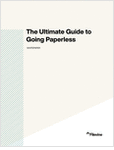Location. Location. Location. Where you work could affect your career—particularly if you’re a female or minority law student or lawyer. That’s one of the messages from the newly released 2014 National Association for Law Placement diversity report.
First, let’s look at the general findings in the NALP report:
- Women and minorities made “small” gains in partnership in 2014. Women account for 21.05 percent of partners in major firms (up from 20.22 percent in 2013), while minorities represent 7.33 percent (up from 7.10 percent in 2013).
- Female associate numbers went up last year, after having declined for four years in a row. But at 44.94 percent, it is still below the high mark of 45.66 percent in 2009.
- Minority associates rates bumped up to 21.63 percent, recovering the ground lost during the recession. (Also up from 20.93 percent in 2013.)
All good news, but whether this upward trend will continue is open to question. (As I reported in my last post,
fewer minorities are now enrolled in the top law schools—which hardly bodes well for diversity in Big Law.) Also left unanswered in the NALP report: Are all minorities making gains? (James G. Leipold, NALP’s executive director, says the information is not yet available.)
But what is clear in the NALP report is that women and minorities seem to fare better in some locations more than others (NALP looked at 40 cities with the most lawyers represented in its directory). Here’s my summary of go-to cities, as well as those to avoid:
1.
Best cities for female partners (where female partnership rate is well-above the 21 percent average): Denver (28 percent) and Detroit, San Francisco and Seattle (all over 25 percent). Not far behind are Fort Lauderdale/Palm Beach, Miami and Minneapolis.
2.
Worst cities for female partners: Northern Virginia (11.97 percent) and Salt Lake City (12.64 percent). Not too much better is Orange County (15.36 percent).
3.
Best city for minority partners: Miami (29.48 percent).
4.
Worst city for minority partners: Raleigh/Durham (less than 0.5 percent).
5.
Best cities for female associates: Indianapolis; Portland, Oregon; San Francisco; and Columbus (close to 50 percent or more).
6.
Worst city for female associates: Salt Lake City (less than 25 percent).
7.
Best cities for minority associates: Miami and the San Jose area (over 38 percent).
8.
Worst cities for minority associates: Cleveland, Milwaukee, Salt Lake City, St. Louis and Wilmington (around 10 percent or less).
What’s interesting is that cities with good records on women often lag behind when it comes to minorities; these include Boston, Minneapolis, Portland (Oregon), Indianapolis and St. Louis.
There are a lot more fascinating geographic tidbits from the NALP report, but you get the drift: If you’re a woman or a minority, or both, pack your bags for Miami (and maybe Northern California–
click here for report on that region). But whatever you do, don’t set foot in Salt Lake City!
Actually, maybe we should make that all of Utah. Is that too harsh?






